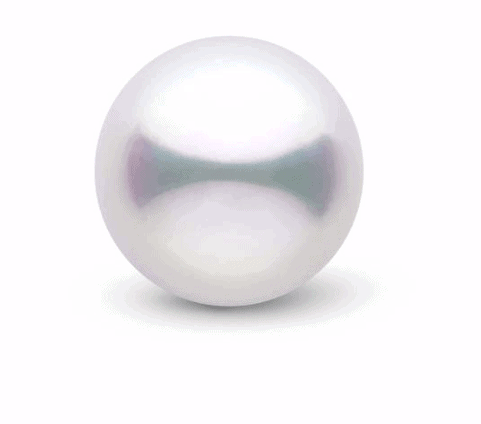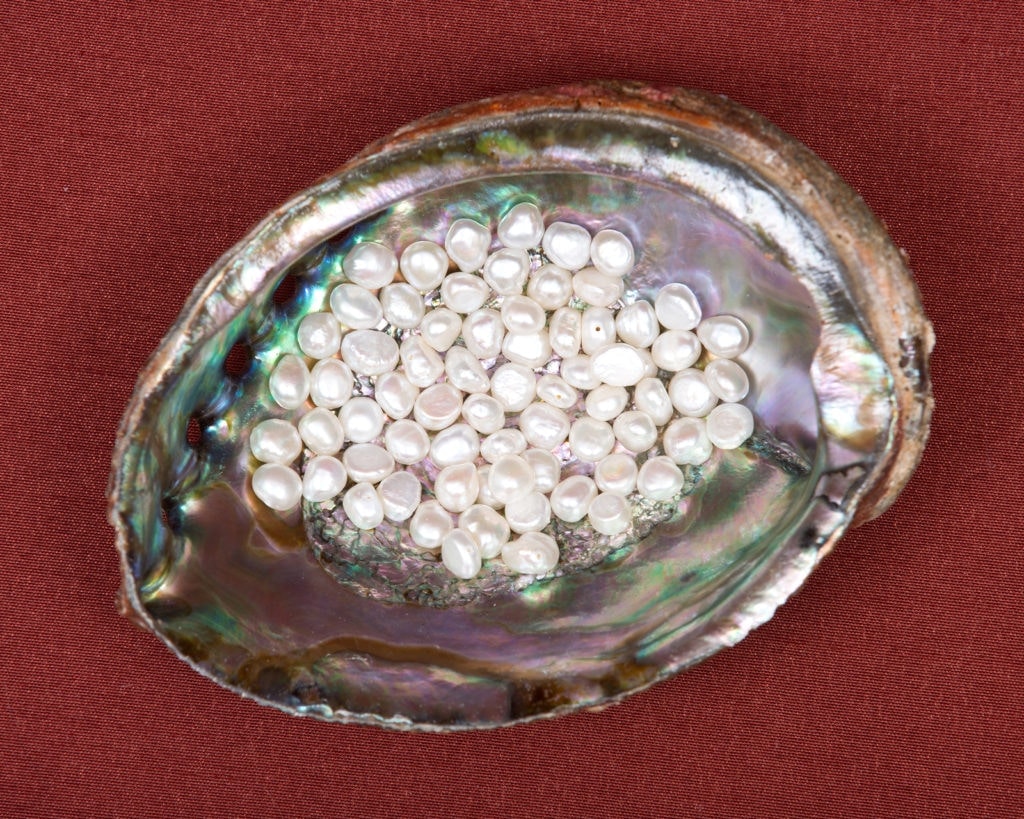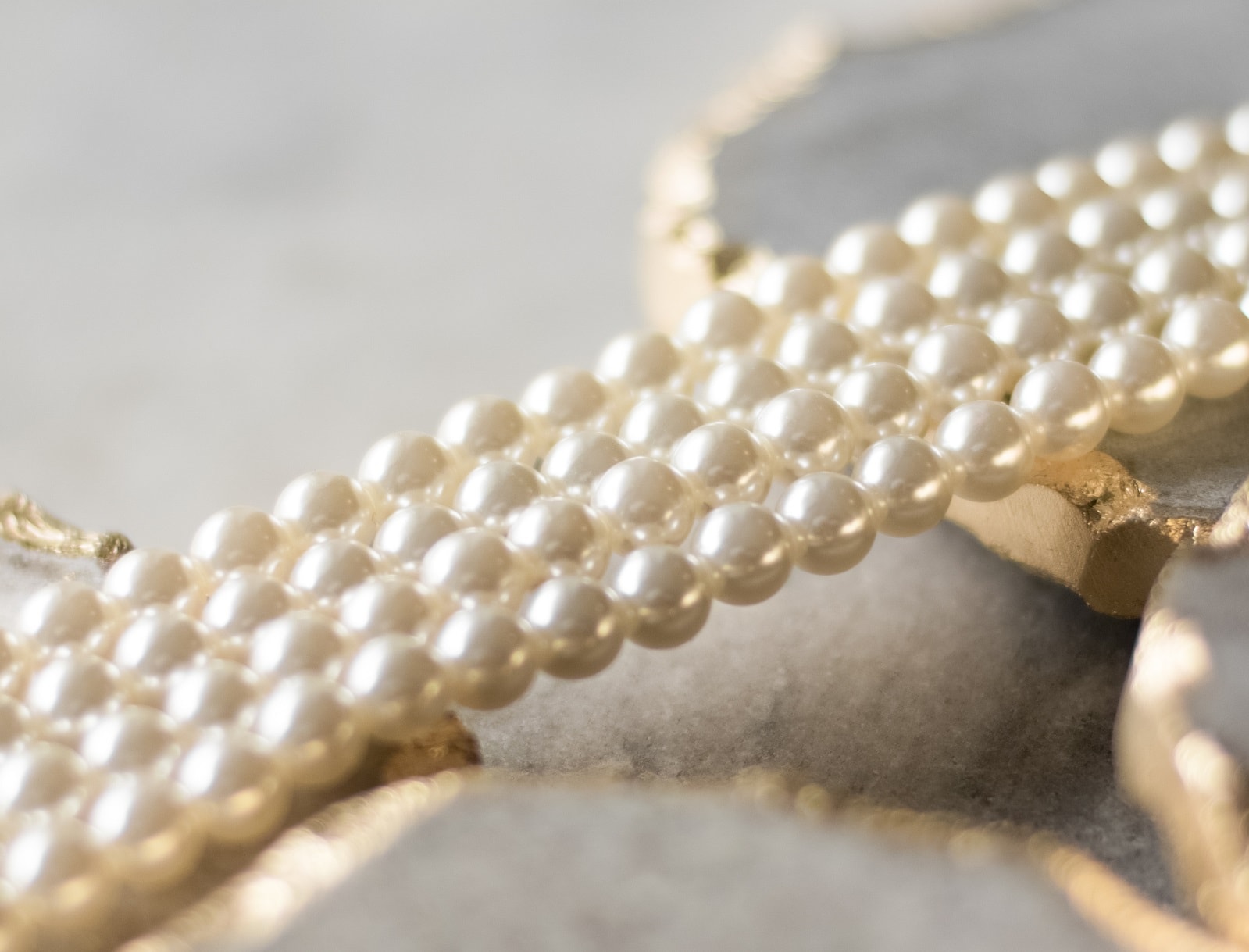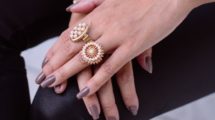Pearls are known for their lustrous shimmer and glorious body color and overtone. That’s what makes a pearl different to every other gemstone out there.
Unfortunately, not every pearl is the same and most have been subjected to some form of treatments. These vary from cleaning and polishing to dyeing and coating. Some are acceptable and others are best avoided.
In this article, let’s take a look at different types of pearl treatments.
Why Are Pearl Treatments Done?

For literally countless millennia, pearls have been essentially treatment-free. They didn’t need to be cut out of surrounding stones and minerals, they didn’t need to be cut into shape, faceted and polished, or anything like that – they were just fished out of the water, cleaned nicely, and sold to the richest person in the area for a small fortune.
Today, however, most pearls tend to go through quite a few treatments before they reach the buyer’s hands. With the great demand and pressure from the market, pearl farmers are forced to offer as much and as better-looking pearls as possible. Where before a pearl could be left to grow in its oyster or mussel for multiple years, nowadays they are usually taken out after as little as 6-8 months. What’s more, while saltwater pearls are still grown one at a time per oyster, freshwater pearls are farmed at a rate of 24 to 32 pearls per mussel.
All this is important to note before we delve further into the various treatments themselves as it explains why they are necessary in the first place. If pearl farmers didn’t treat their pearls in any significant way, the overall number and quality of the pearls on the market would be much lower, resulting in smaller quantity, higher prices, and much more waste.
So, should all pearl treatments be avoided?
While some treatments are minor, positive, and necessary enough, there are certain treatments that lower the long-term durability and quality of the pearls and need to be avoided.
Types of Pearl Treatments
Virtually all pearls on the market today are treated in one way or another, except the very best ones. Let’s take a look at the “acceptable” treatments your pearls have likely gone through:
- Cleaning: Unlike what you might have seen on TV, pearls don’t just come out perfectly white and shiny out of their oysters or mussels. Instead, they are covered in various types of dirt and polyps. They need to be properly cleaned before the farmer can even consider selling the pearl. This is standard procedure, and although it’s considered a treatment of sorts, it can hardly be classified as such.
- Bleaching: Bleaching is used after the initial cleaning to lighten up and even out the natural body color of the pearl. Another reason for bleaching is to remove the visible layer of conchiolin around the bead nucleus. The first layer the oyster or mussel deposits on the pearl nucleus is a darker coating of the porous protein conchiolin and because most pearls (e.g. Akoya) have very thin layers of nacre, the darker conchiolin is often still visible. Bleaching hides the darker color of conchiolin that’s still visible through the thin nacre.
- Polishing: Another quite common practice, polishing is done on most pearls,
bleached or otherwise, to smooth out any of the small imperfections they may
have. Polishing is typically done by gently tumbling over the pearl with
various natural materials such as bamboo slivers, eucalyptus leaves and other
similar materials. Those are typically mixed in with some oily substance such
as beeswax which helps for a greater polish and an improved luster.
Such layers of polishing are usually very thin and minor, and don’t intrude on the quality of the pearl in any significant way. However, one problem of oily coating substances such as beeswax is that they can wear off after time, lowering the long-term value of the pearl.
All three of these treatments are widespread in the pearl industry and are rarely disclosed by the seller. They’ve become standard practice and not anything to worry about.
In an attempt to maximize the price they can charger for medium- or lower-quality pearls, as well as to reduce the amount of waste, some pearl farmers and jewelers will typically try to alter or improve the visual quality of their pearls.
So, which are the more intrusive types of treatments that might have been done on your pearls?

- Dyeing: Different markets have different preferences when it comes to pearls color. Most Americans prefer pearls with pink overtones, while Germans tend to look for white pearls. South Americans and the French tend to go for creamy pearls while in the Middle East tends to gravitate towards cream-gold colors.
When you consider the fact that most pearls come from the same pearl farms, it’s no surprise that dyeing is necessary to meet the demand for certain pearl colors. There’s nothing wrong with buying dyed pearls as long as you know that’s what you’re getting. Some famously dyed pearls are black Akoya and freshwater.
- Heat treatments: Pioneered by the Chinese, this treatment method has been around for quite some time. It’s done to improve the natural luster of the pearls after a bleaching or a cold treatment before that. There isn’t much “wrong” with this method as it doesn’t have too much negative effects on the pearls other than the fact that they’ll lose the improved luster over time and will likely return to their basic state.
- Irradiation: Usually done on light-colored freshwater pearls together with dyeing, irradiation gives the pearls a darker and richer color. This is usually done to imitate Tahitian black pearls but the color tends to be suspicious to the trained eye.
- Pinking: This is a famous but simple method of chemical dyeing to give pearls the pink color that’s in high demand.
- Maeshori: This is a type of heat treatment aimed to improve pearl luster and has evolved over time. This includes coating the pearl with a solvent to clean them so that they could be bleached properly. Today’s maeshori treatments vary, with some including coating the pearl and soaking it in various solutions. These treatments affects the way pearl’s nacre and, depending on the specifics, can cause the pearls to lose their luster after a while as they’re more prone to becoming brittle.
- Buffing: A type of polishing, usually with beeswax, buffing is done to remove scratches and improve the luster of pearls. When it’s done without chemical intervention it’s considered acceptable as most chemicals tend to eat away the nacre of the pearls.
- Filling: When a low-quality pearl has a loose nucleus or is partially hollow, it is commonly filled with an epoxy substance. This improves their quality and durability quite substantially. Again, if this is properly documented and the pearls are adequately priced, it wouldn’t be a problem. It becomes a problem when such pearls are then coated and dyed, as well as sold at higher than the appropriate prices.
- Coating: This is often done with lacquer to temporarily improve the luster of the pearl. Such coating wears off rather quickly, however, leaving the buyer with a lower-quality pearl than what they might have thought they were buying.
How To Look For Possible Treatments On A Pearl?
Most pearl treatments are hard to detect to the naked and untrained eye. For that reason, the single best thing you can do if you want to make sure you’re about to purchase a truly high-quality pearl is to find an expert to help you out along the way.
Aside from that, look for the consistence or lack thereof in the color and luster of the pearl. If a pearl’s color is too consistent and even or if its luster is too impressive despite the medium price, you can be pretty much certain that the pearl has gone through quite a few artificial treatments that will likely wear off in time.
Another thing to look out for is whether the pearl’s color and luster match the color and luster of the other pearls in a jewelry piece too perfectly. If you’re looking to buy a pearl necklace, for example, and all pearls in it are 100% identical, you can be sure that they have been dyed and coated to achieve that effect. Even with the highest-quality pearls you can expect to see some minor differences in the shape, size, color, and luster of different pearls in the same necklace.
And finally, always purchase from a trusted vendor with a great track record. They should be able to take their pearls back without issue if you don’t want them.





